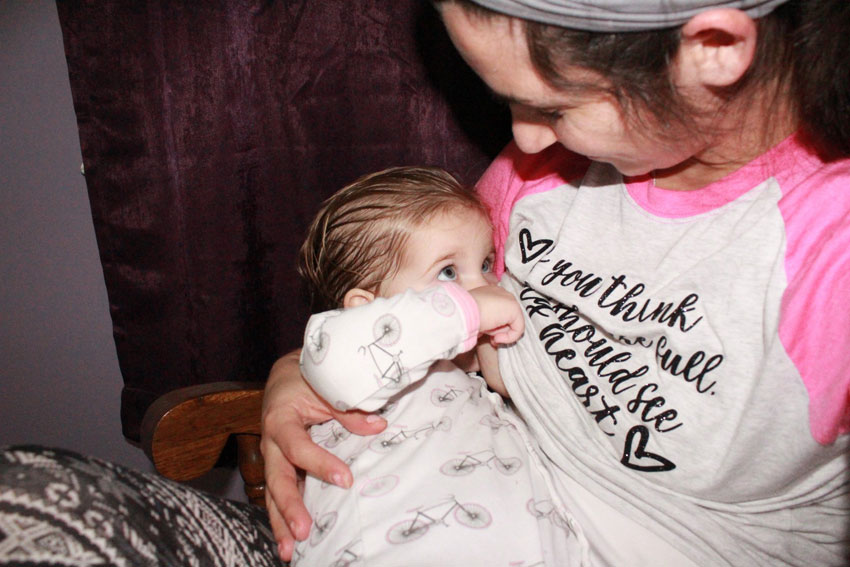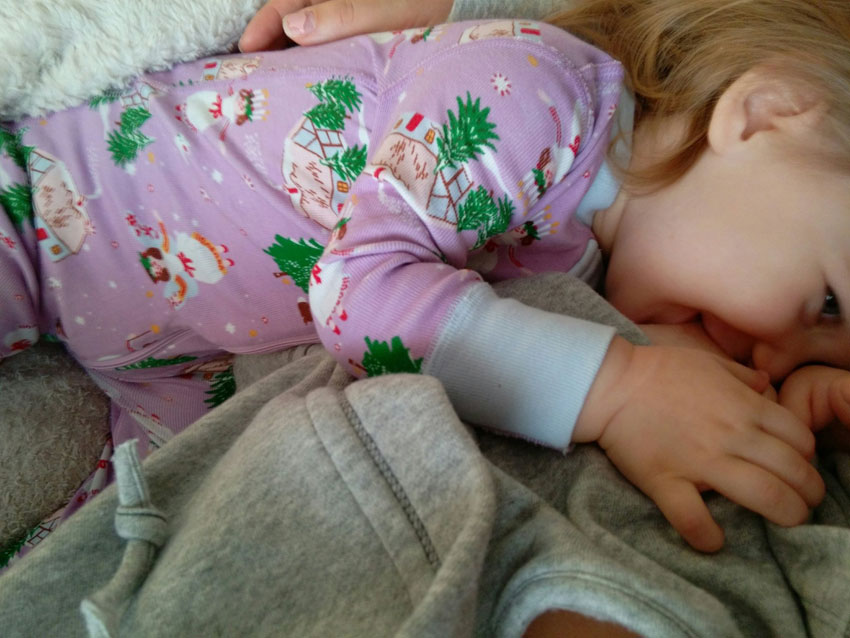THE WHAT, HOW, AND WHEN OF MASTITIS: WHAT CAUSES IT, HOW TO TREAT IT AT HOME, AND WHEN TO SEE A DOCTOR
A note from Stephanie- I found out Kendra, a Figure 8 Mom was also a physician assistant and treats many moms who have mastitis. I thought it would be interesting and of course informative to get some advice from a experienced mom-professional. Thanks, Kendra!
As a breastfeeding mom, a friend to many other breastfeeding moms, and a physician assistant treating many pregnant and postpartum women in my office, I’m no stranger to the many challenges that come along with breastfeeding. One of the most common problems that I’ve seen, in my experience, is mastitis.


(On the left, she is wearing the Boob Design Francis Organic Knitted Striped Maternity & Nursing Sweater)
What is mastitis, and what causes it?
Mastitis is caused by poor drainage of milk that results in engorgement of the breast. Since breastmilk naturally contains bacteria (the good kind – more on this later!), the breast can become infected if it is not drained properly within 12-24 hours. Symptoms of mastitis include pain, redness, and swelling. Infective mastitis also is usually characterized by fever, a firm red area, flu-like symptoms, and discomfort in the armpit area.
Other conditions that might be confused for mastitis include engorgement and a plugged duct. Engorgement differs from mastitis in that it usually occurs in both breasts rather than one, and it doesn’t cause fevers, chills, and body aches. A plugged duct generally is marked by a tender lump on one side, but like engorgement (and unlike mastitis), it also would not be expected to cause other diffuse body symptoms.

How can I treat mastitis at home?
The best way to treat mastitis is actually to take measures to prevent it. While there is no 100% way to do this, here are some tips:
• Wear a loose bra and loose shirts. Avoid compression or pressure on your breasts.
• Adjust your seatbelt so that it does not compress an area of your breast for a prolonged period of time, like on extended car rides.
• Try to avoid the development of an oversupply of milk. Don’t pump if you can avoid it! Especially in the first weeks and months, your breasts will learn how much milk they to produce based on upon how much is demanded – and your baby will give your body the best cues for this.
• Feed on demand and don’t try to “space” or “schedule” feedings. For the same reason above – your body needs the external stimulation as it establishes an adequate supply. Especially if you notice your breasts are very full or engorged, let your baby drain them (or a pump if you have feeding obstacles). Warm compresses and massage can also help.
• Use nipple cream or ointment after every feeding. Don’t wait until your nipples are cracked and bleeding, as this opening in the skin allows bacteria to enter that can cause infection.
• If you are weaning, do so gradually. Just as your body takes time to develop a milk supply, it also takes time to stop making milk. Rapid weaning can cause engorgement.
• Eat a well-balanced diet. Easier said than done, right? But a healthy body functions better and fights infections more efficiently.
• Get enough rest. Again – not the easiest thing as a new mom. But, don’t over commit to visitors and outings when you’re exhausted. Put yourself and your baby first!
• Research suggests that taking a probiotic in late pregnancy (sometime in the third trimester) can decrease the risk of developing mastitis. You can get this naturally in your diet (like from yogurt) or from a supplement.
• It’s important to act quickly when signs of mastitis appear – within the first 12-24 hours. Apply cold compresses for pain and swelling and take NSAID pain relievers like ibuprofen (Advil and Motrin) or naproxen (Aleve). Continue breastfeeding as mentioned above even when it’s painful, and promote complete emptying of your breasts with hand expression, pumping as needed, and hot showers or hot packs before feeding.

A note on antibiotics: If you think you have mastitis, don’t self-medicate yourself with old antibiotics laying around the house or from a friend. Antibiotics kill off ALL bacteria in your body – not just the bad kind that cause infection. Not all episodes of mastitis require antibiotic treatment, and taking an antibiotic that’s not necessary can actually be harmful. When good bacteria are killed off, we are at increased risk for other germs like viruses that cause colds and the flu, and also fungus and yeast that can cause thrush and yeast infections in both mom and baby. Breastmilk also passes along some of this good bacteria to your baby, and that helps his or her immune system to be more healthy. There are also all different kinds of antibiotics for all different kinds of infections – so pills left over from a urinary tract infection or pneumonia may not be the right kind to treat mastitis.
When should I call my doctor?
If symptoms of pain, swelling, and redness last longer than 12-24 hours, and/or if you also start to notice fevers and flu-like symptoms, call your primary care doctor or your obstetrician. If you can’t reach your doctor, consider going to an urgent care or an emergency room as prompt treatment is important. Your doctor will probably prescribe an antibiotic. Take a probiotic supplement (or eat yogurt) as long as you are on the medication to prevent yeast infections in both you and your baby. Always take your antibiotic as long as your doctor recommends (at least 5-7 days, but maybe longer) even if you are feeling better or your symptoms totally resolve. If you are not feeling better within 1-2 days, follow up with your doctor. You may need an ultrasound to rule out worsening infection that needs additional treatment.




